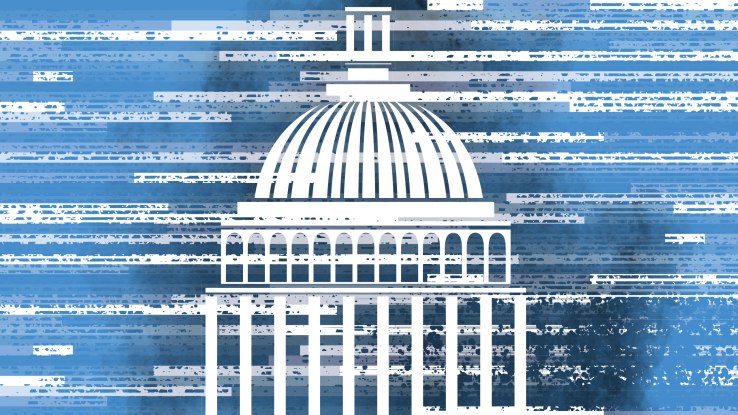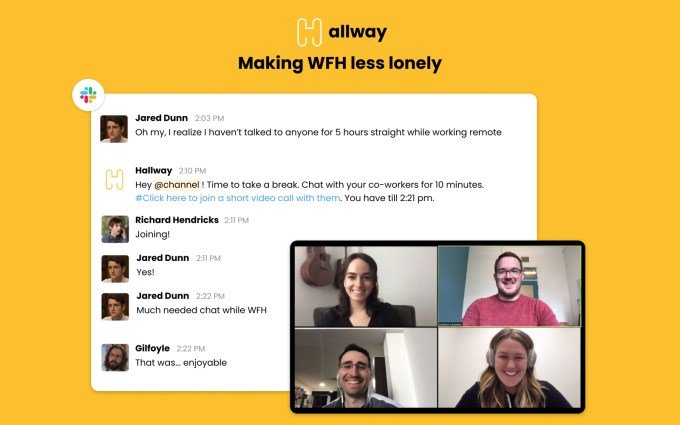[Editor’s note: Want to get this free weekly recap of TechCrunch news that startups can use by email? Subscribe here.]
While consumer tech has matured as a startup category in recent years, many investors continue to be bullish on specific trends like online gaming, voice, and the unbundling of platforms in favor of focused social networks. That’s the key takeaway from a survey that Josh Constine and Arman Tabatabai did this week with 16 of the most active investors in key social product categories over on Extra Crunch. Here’s an excerpt of the responses, from Olivia Moore and Justine Moore of CRV:
-
“Unbundling of YouTube.” You can build a big company by targeting a vertical within YouTube with a product that has better features and more opportunities for creator monetization. Twitch is a great example of this! We’re also watching early-stage companies like Supergreat (in beauty) and Tingles (ASMR).
-
Voice as a social medium. Voice continues to pick up steam as a broadcast medium via podcasting, but we haven’t seen a lot in social or P2P voice yet. We think a successful platform will leverage the fact that voice content can be created and consumed while doing other things. We’re big fans of companies like TTYL and Drivetime that are making strides here!
-
Flexible digital identities. Gen Zers are online constantly but have different preferences across platforms/friend groups about how they want to “show up” digitally. The rise of “Finsta” accounts is one good example of this. Companies like Facemoji already help users create social content using a curated digital avatar — we’re excited to see what else founders build here!
-
Synchronous, shared mobile experiences. We’re bullish on apps that connect users in real time to have a shared social experience. Most apps now are “single-player,” which creates scroll fatigue. HQ Trivia was an early example more on the entertainment side, while companies like Squad help users browse the internet and watch TikTok together.
Other respondees include: Connie Chan (Andreessen Horowitz). Alexis Ohanian (Initialized Capital), Niko Bonatsos (General Catalyst), Josh Coyne (Kleiner Perkins), Wayne Hu (Signal Fire), Alexia Bonatsos (Dream Machine), Josh Elman (angel investor), Aydin Senkut (Felicis Ventures), James Currier (NFX), Pippa Lamb (Sweet Capital), Christian Dorffer (Sweet Capital), Jim Scheinman (Maven Ventures), Eva Casanova (Day One Ventures) and Dan Ciporin (Canaan).
EC subscribers please note: a second part of this survey will be running this coming week, focused specifically on social investing in the COVID-19 era.

Are VCs investing — or maintaining?
Speaking of financing, who is actually writing checks right at this moment in time?
“I’ve seen a lot of VCs talking about being open for business,” Eniac Ventures founding partner Hadley Harris proclaimed on a fundraising-trend panel this week, “and I’ve been pretty outspoken on Twitter that I think that’s largely bullshit and sends the wrong message to entrepreneurs.” Instead, as Connie Loizos covered for us on TechCrunch, he said he didn’t have time to talk to more founders because he was so busy helping existing portfolio companies.
Not every investor agrees with that viewpoint — VC Twitter features many an anecdote about fresh companies getting funding.
Let’s just hope that both things are true, because it is already rough out there.

Does your startup qualify for a PPP loan? (And should you apply?)
Two debates have been raging around government support for startups. First, the big, messy new Paycheck Protection Program — designed to cover expenses for small businesses — does seem to be somewhat available to startups, based on revisions published by the Small Business Administration late last week. But things get complicated quick depending on your fundraising and cap table, as Jon Shieber covered last weekend for TechCrunch. Venture firms typically have controlling interests in a portfolio of companies that total more than 500 people, so if such a firm also has a controlling interest in your startup, you may not be eligible. Even if the VC stake is under 50%, preferred terms that came with the fundraising may your application afoul of the rules.
To help founders work through their own situations faster, startup lawyer William Carleton wrote a quick guide for Extra Crunch. Here’s where he says you need to start:
Do you have a minority investor which controls protective covenants in your charter, or which controls a board seat afforded certain veto rights on board decisions? If the answer to either fork of that question is “yes,” you almost certainly have confirmed that you will need to amend your charter and/or other governing documents before proceeding with a PPP application.
The other aspect, of course, is whether startups should be applying for this in the first place. Congress broadly intended the money to go towards small to medium sized businesses, most of whom would never be considered for venture. Shieber’s article is full of comments on that topic, if you feel like weighing in….

The commercial real estate comeuppance
If you’re like me, and you’ve started companies in the Bay Area and struggled to find office space you could afford, enjoy this bit of schadenfraude as you plot your remote-first future. Because the commercial real estate industry is facing an existential crisis after many, many years of rent-seeking upon the Silicon Valley tech economy (and everyone else).
Connie explored this exploding topic with a range of startups, investors and CRE agents in a big feature for TechCrunch this week. One analyst “expects the market to come down by ‘at least 10% and probably 20% to 30%’ from where commercial space in San Francisco has priced in several years, which is $88 per square foot, according to CBRE. Driving the expected drop is the 2 million square feet that will come onto the market in the city as soon as it’s possible — space that companies want to get off their books.”
It’s quite possible to imagine even bigger declines, given the broader hits that most any possible tenant is also taking to their budgets. Who knows, maybe this whole process will even help make the Bay Area and other wealthy metros a little more affordable again.

Edtech gets hot again, according to investors
After lots of money and lots of struggle over the past decade, edtech is suddenly hot again thanks to the pandemic. Natasha Mascaranhas has been covering the trend recently, and dug in this week with a big investor survey on the category for Extra Crunch.
“One investor pivoted from spending a third of their time looking at edtech companies to devoting almost all their time to the sector,” she tells me. “Another, who has been bullish for years on edtech, says its business as usual for them, but that competition may arise. An ed-tech focused fund thinks the sector has been underfunded for a while, so the moment of reckoning has begun.”
Respondents include:
- Jenny Lee, GGV
- Tetyana Astashkina, LearnLaunch
- Jean Hammond, LearnLaunch
- Marlon Nichols, MaC Venture Capital
- Mercedes Bent, Lightspeed Venture Partners
- Jennifer Carolan, Reach Capital
- Shauntel Garvey, Reach Capital
- Jan Lynn-Matern, Emerge Education
- Lesa Mitchell, Techstars
- Tory Patterson, Owl Ventures
- Ian Chiu, Owl Ventures
- Tony Wang, 500 Startups
Across the week:
TechCrunch
Economists haven’t thrown out the models yet (but they will)
Five CEOs on their evolution in the femtech space
Equity Monday: Hunting for green shoots amid the startup data
Extra Crunch
How SaaS startups should plan for a turbulent Q2
Fintech’s uneven new reality has helped some startups, harmed others
Fast-changing regulations give virtual care startups a chance to seize the moment
Twilio CEO Jeff Lawson on shifting a 3,000-person company to fully remote
Amid unicorn layoffs, Boston startups reflect on the future
#EquityPod
From Alex:
We started with a look at Clearbanc and its runway extension not-a-loan program, which may help startups survive that are running low on cash. Natasha covered it for TechCrunch. Most of us know about Clearbanc’s revenue-based financing model; this is a twist. But it’s good to see companies work to adapt their products to help other startups survive.
Next we chatted about a few rounds that Danny covered, namely Sila’s $7.7 million investment to help build technology that could take on the venerable and vulnerable ACH, and Cadence’s $4 million raise to help with securitization. Even better, per Danny, they are both blockchain-using companies. And they are useful! Blockchain, while you were looking elsewhere, has done some cool stuff at last.
Sticking to our fintech theme — the show wound up being super fintech-heavy, which was an accident — we turned to SoFi’s huge $1.2 billion deal to buy Galileo, a Utah-based payments company that helps power a big piece of UK-based fintech. SoFi is going into the B2B fintech world after first attacking the B2C realm; we reckon that if it can pull the move off, other financial technology companies might follow suit.
Tidying up all the fintech stories is this round up from Natasha and Alex, working to figure out who in fintech is doing poorly, who’s hiding for now, and who is crushing it in the new economic reality.
Next we touched on layoffs generally, layoffs at Toast, AngelList, and not LinkedIn — for now. Per their plans to not have plans to have layoffs. You figure that out.
And then at the end, we capped with good news from Thrive and Index. We didn’t get to Shippo, sadly. Next time!
Listen to the full thing here!

Source: Tech Crunch














